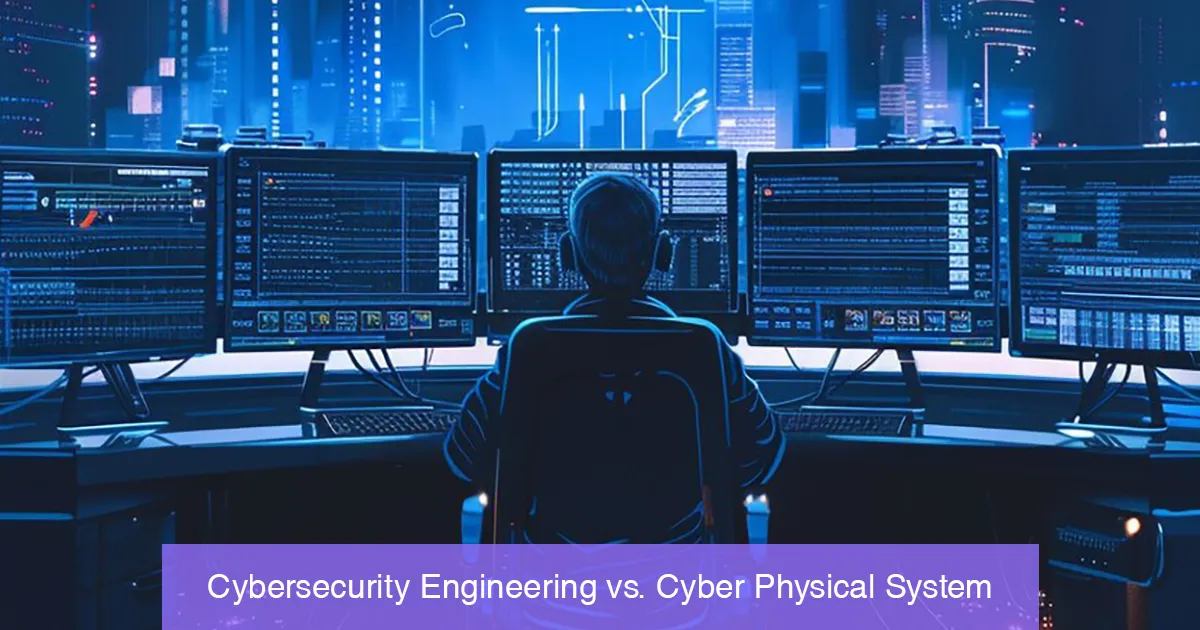FET Blogs





Recent State of Cybersecurity 2023 findings reveal an alarming reality: 97% of organisations have reported a surge in cyber threats driven by geopolitical instability. More than half of these organisations now prioritise strengthening third-party and external network defences.
Cybercriminals exploit vulnerabilities in business systems to acquire sensitive information, including corporate credit card details, passwords, and important customer data. Organisations of every size now face a crucial task in protecting their information from data breaches and major cyberattacks.
Cybersecurity is essential for protecting computer systems and sensitive data from unauthorised access, cyberattacks, and data breaches. It involves a combination of technologies, processes, and best practices designed to defend against digital threats and ensure data integrity. Mastering core cyber security engineer skills—such as evaluating risks, applying encryption techniques, and securing networks—is crucial for building robust and proactive defence strategies.
Among these, Cyber Physical System (CPS) is particularly crucial in protecting critical infrastructure and ensuring the safety of both digital and physical assets. This blog discusses the key differences between cybersecurity and CPS while highlighting the cyber security engineer skills underpinning both domains.
Cybersecurity Engineering is a specialised field of information security focused on designing, developing, and implementing secure network solutions to protect organisations from cyber threats.
Cybersecurity Engineers apply core security principles to build infrastructure and identify system vulnerabilities. They conduct penetration tests to uncover application vulnerabilities and oversee network infrastructure.
Additionally, Cybersecurity Engineers define security protocols and configure protective devices to ensure continuous IT system security. Cybersecurity Engineers help organisations respond quickly to emerging cyber threats by working with various departments.
A Cyber Physical System (CPS) combines physical and digital components. The system combines computer hardware with physical systems to achieve continuous monitoring and control functions.
The Cyber Physical System establishes communication networks and operates between physical systems through input and output mechanisms to create an unbroken cycle of feedback interactions. The combination of sensing, actuation, computation, and communication through Cyber Physical System results in process efficiency while enabling improved control of physical operations.
Cybersecurity Engineering protects digital systems, networks, and data from cyber threats such as hacking, malware, and unauthorised access. On the other hand, Cyber Physical Systems Engineering, integrates computational and physical components to enhance performance, safety, and automation in areas such as industrial control, healthcare, and autonomous vehicles.
If individuals are interested to pursue a career in cyber physics engineering, they can consider Bachelor of Technology (BTech) in Computer Science and Engineering (Cyber-Physical Systems) or certification courses such as Cyber Physical Systems: Modelling and Simulation. The curriculum of CPS comprises core elements of cyber physics, which are the computational and networking aspects of engineering.
The table below discusses the key difference between these two domains:
| Aspect | Cybersecurity Engineering | Cyber Physical Systems (CPS) Engineering |
| Key Functions | Security design, penetration testing, threat mitigation, and network protection. | System integration, sensor-actuator control, and real-time data processing. |
| Main Concerns | Data breaches, malware, hacking, and unauthorised access. | System reliability, real-time communication, and physical safety. |
| Applications | IT security, cloud security, and financial data protection. | Industrial automation, autonomous vehicles, smart grids, and healthcare systems. |
| Interaction | Primarily deals with digital environments. | Combines digital computing with real-world physical processes. |
| Security Measures | Firewalls, encryption, authentication, and intrusion detection. | Secure communication protocols, redundancy, and fail-safe mechanisms. |
| Examples | Protecting banking systems, securing cloud storage, and defending against phishing attacks. | Managing smart traffic lights, controlling robotic arms in manufacturing, and Cybersecurity in pacemakers and medical devices. |
| Key Skills | Cyber security engineer skills include: Network security, cryptography, ethical hacking, risk assessment, and incident response. | CPS engineers’ skills include embedded systems, real-time computing, sensor integration, control systems, and automation security. |
No. While Network security and Cybersecurity are related, both have distinct focus areas.
A Network Security Engineer protects computer networks from unauthorised access and cyber threats. In contrast, a Cybersecurity Engineer is responsible for all aspects of digital security, including data protection, system security, and online threats. However, students can pursue a course on Cybersecurity to access career opportunities as a Network Security Engineer or a Cybersecurity Engineer.
Cybersecurity and CPS Engineering are distinct yet interconnected fields that safeguard modern technology. Cybersecurity Engineering protects digital assets, while CPS Engineering enhances the safety and reliability of automation systems. Both disciplines require specialised expertise. Key cybersecurity engineer skills; such as cryptography, real-time computing, and ethical hacking—are critical in both digital and physical domains. Understanding these differences helps organisations implement tailored security solutions that address digital and physical vulnerabilities.
A1: Yes. A course in CPS stands out as an ideal choice since it merges Electrical Engineering, Mechanical Engineering, and Computer Science to develop a comprehensive understanding of system complexity. Graduates from this field can seek employment opportunities in robotics, automation, healthcare and emerging sectors.
A2: The central role of CPS in Industry 4.0 enables the development of smart manufacturing, autonomous vehicles, and advanced grid technologies, along with innovative applications. As technology advances, CPS systems will utilise artificial intelligence (AI) and Machine Learning (ML) to enhance their operational capabilities, enabling the delivery of real-time decisions and predictive maintenance.
A3: The domain of Cybersecurity includes embedded security that safeguards both hardware and software components of embedded systems. In contrast, Cybersecurity is a broader field that protects all digital assets and networks from cyber threats.
A4: The Internet of Things (IoT) connects devices via the Internet, enabling communication and data exchange. In contrast, Cyber-Physical Systems (CPS) integrate computation with physical processes to automate tasks and enable real-time decision-making.
A5: A cyber-physical system, or CPS, combines both physical elements and computer-based technologies. These systems work together to monitor real-world processes and control them in real time, creating a smooth interaction between the physical and digital worlds.
A6: A Cybersecurity Engineer identifies vulnerabilities in systems and software, and designs robust defences against malware, ransomware, insider threats, and other cyberattacks.